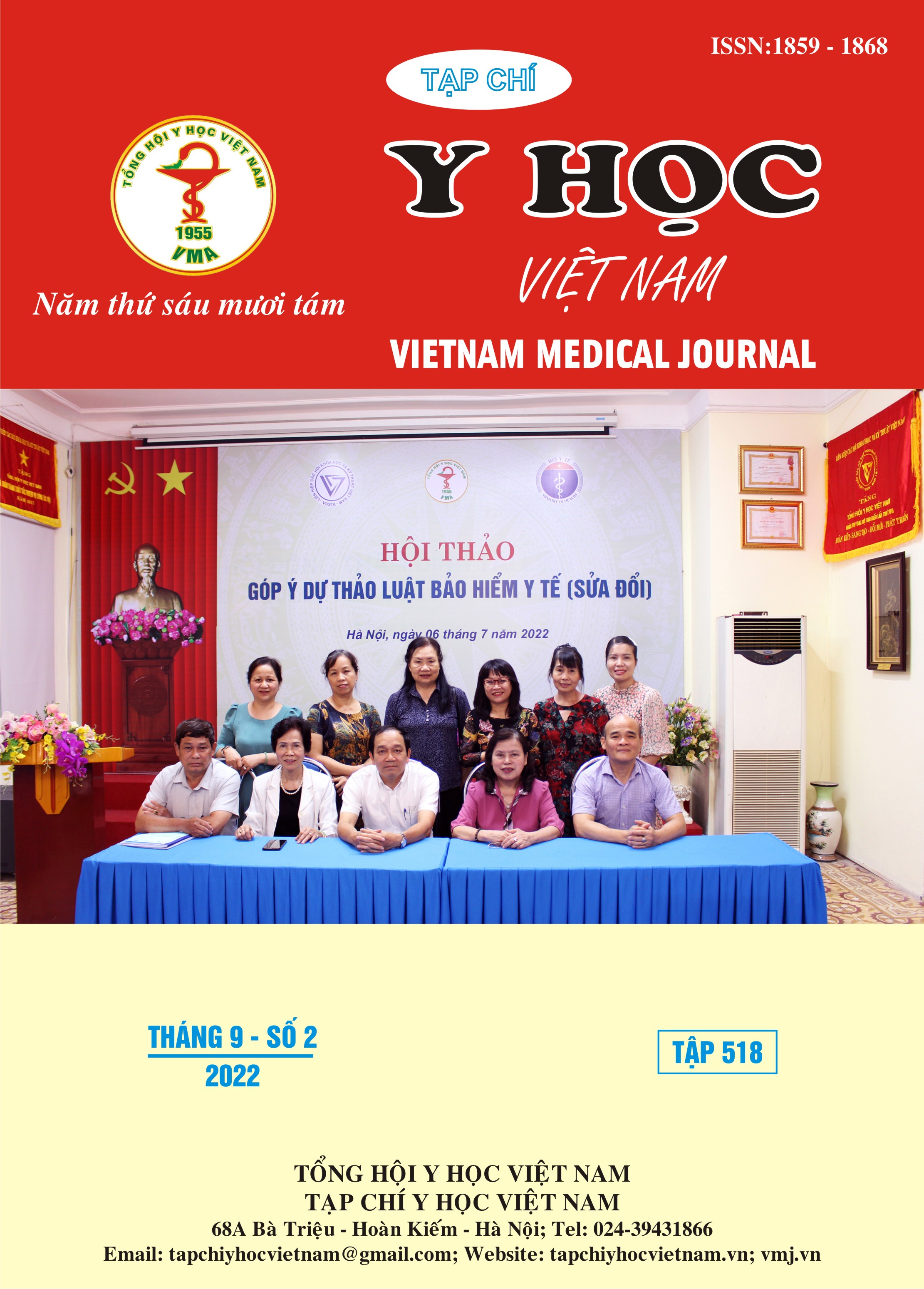CLINICAL FEATURES OF DEPRESSION IN IN-PATIENTS WITH ACUTE LEUKEMIA
Main Article Content
Abstract
Background: Depression is the common mental disorder in patients with acute leukemia. Depression affects many aspects such as making patients with acute leukemia less physically active, reduced quality of life, less compliant with treatment, and increased risk of suicide, especially affecting the recovery process and social reintegration. Objectives: To describe clinical features of depressive disorders in in-patients with acute leukemia at Hematology and Blood Transfusion Center, Bach Mai Hospital. Subjects and research methods: A cross-sectional descriptive study of 82 in-patients with acute leukemia who were treated at Hematology and Blood Transfusion Center, Bach Mai Hospital from August 2021 to August 2022. Results: The study subjects sociademographic characteristics: male : female = 1,16 : 1; average age - 43,4 ± 14,0; living in rural areas – 69,5%: high school education – 45,1%. Some main clinical features: the ratio of depressive disorders according to ICD-10 criteria was 42.7% (in which 17,1% moderate level); the most common onset symptom was sadness (20,7%); the most frequent typical symptoms were reduced energy leading to increased fatiguability and depressed mood (97,1%, 94,3%); among depressive common symptoms, disturbed eating and disturbed sleep were the highest proportion (88,6%, 85,7%), especially suicidal thought or behavior appeared in 17,1% of patients. Conclusion: Depression was a common mental disorder in patients with acute leukemia. Depression was often first triggered by sadness. The most frequent typical symptoms were reduced energy leading to increased fatiguability and depressed mood, the most common symptoms were disturbed eating and disturbed sleep, especially 17,1% of patients reported having suicidal ideas or attempts. Decreased appetite accounts for the highest proportion of somatic symptoms in depression.
Article Details
Keywords
acute leukemia, depression, clinical features
References
2. Richard M. Stone (2007). Treatment for Acute Myeloid Leukemia in patient under 60 years.
3. Cancer today. Accessed June 4, 2021. http://gco.iarc.fr/today/home
4. Salmon RM. The American Psychiatric Publishing Textbook of Psychosomatic Medicine. J Clin Psychiatry. 2007;68(12):1990. doi:10.4088/JCP.v68n1223a
5. Zhou F, Zhang W, Wei Y, et al. The changes of oxidative stress and human 8-hydroxyguanine glycosylase1 gene expression in depressive patients with acute leukemia. Leukemia Research. 2007;31(3):387-393. doi:10.1016/j.leukres.2006.07.014
6. Organization WH. Depression and Other Common Mental Disorders: Global Health Estimates. World Health Organization; 2017.
7. Suh KJ, Shin DY, Kim I, et al. Comparison of quality of life and health behaviors in survivors of acute leukemia and the general population. Ann Hematol. 2019;98(10):2357-2366. doi:10.1007/ s00277-019-03760-5
8. Dogu MH, Eren R, Yilmaz E, et al. Are We Aware of Anxiety and Depression in Patients with Newly Diagnosed Acute Leukemia? J Gen Pract. 2017;05(05). doi:10.4172/2329-9126.1000335


